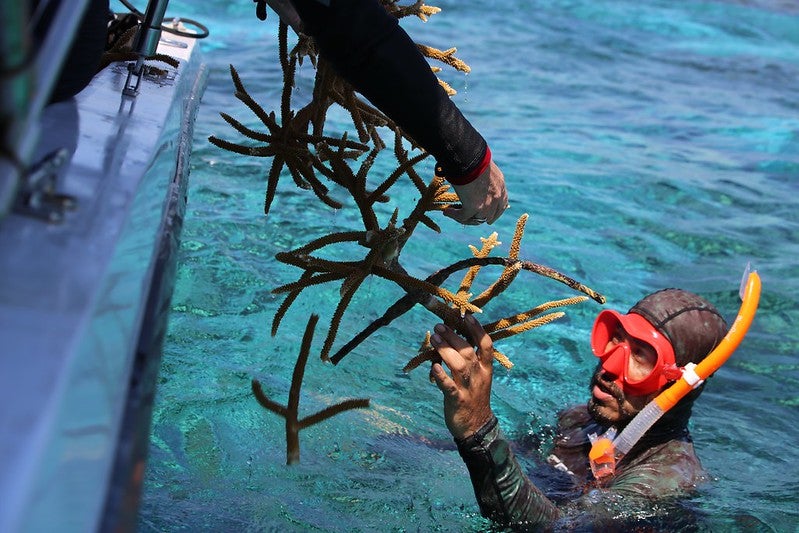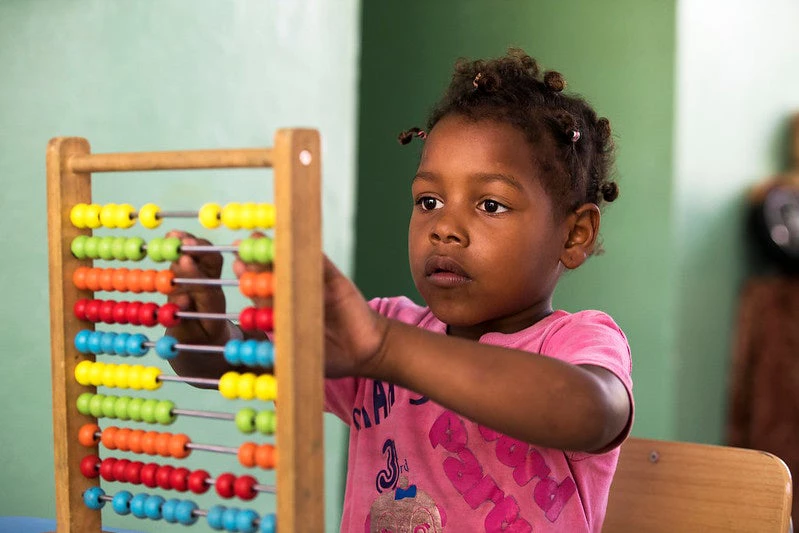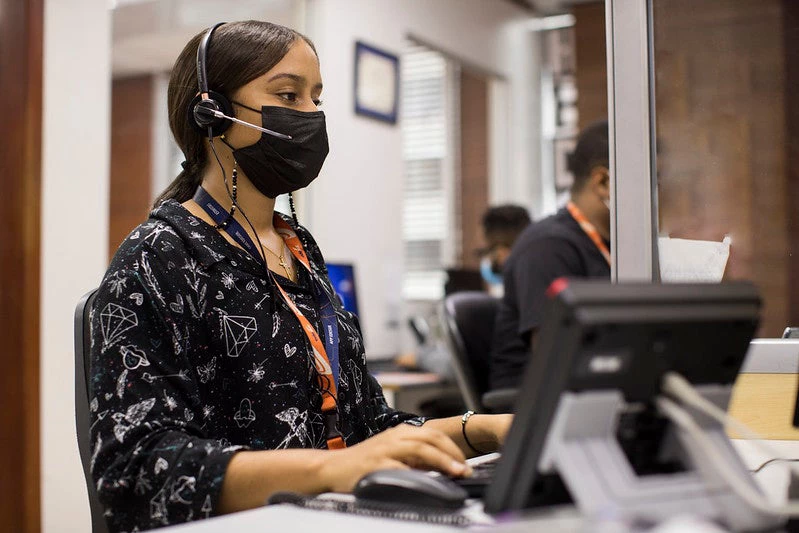 Photo: Jessica Belmont - World Bank
Photo: Jessica Belmont - World Bank
Hope and cautious optimism. That’s what the New Year seems to have brought for Latin America and the Caribbean (LAC) after a tumultuous 2021.
However, for these sentiments to prevail and come to fruition, the region needs to act on four key areas -its New Year’s unintended resolutions, if you will. These are: boost productivity and jobs; tackle its skyrocketing debt; contain inflation; and create the conditions for a green recovery.
Understandably, there’s optimism because the region has begun the new year on a solid economic footing. After experiencing in 2020 its deepest economic contraction in over a century, 2021 ended with hopeful signs of recovery: as the pandemic started to ease, and internal and external conditions improved in the last semester, growth estimates for 2021 climbed to 6.7%, signaling a stronger rebound than originally thought.
Before getting into the specifics of 2022, let’s take a quick look at the state LAC is in as it navigates a post-pandemic new normal and confronts these emerging challenges.
First, it’s important to recognize the role of vaccination in the region’s recovery. Latin America’s better-than-anticipated rebound is closely linked to a rapid progress in COVID-19 vaccination rates: as of early January 2022, 60 percent of the region’s population was fully vaccinated (two doses or more) as compared to a meager 15 percent back in July 2021.
This is huge, especially for a region that had lagged for many months and now it’s one of the most vaccinated in the world. But LAC countries shouldn’t rest on their laurels. More needs to be done to get more shots into arms, especially in some Caribbean countries where vaccination rates are significantly low. The arrival of Omicron makes this goal even more pressing: more than 70 percent of people sick with the variant admitted to hospitals are unvaccinated.
By way of example, fully vaccinated rates range from 95% and 85% in Chile and Argentina to a single digit in Haiti, including many countries still below the World Health Organization target of 40%.
Countries that rolled out the vaccine early and were able to reach most segments of their populations -e.g. Chile, Peru, the Dominican Republic- were also able to reopen more quickly and recover more effectively (granted, with some help by favorable external conditions). Others, like most economies in the Caribbean, are still struggling to recover even as they face a sluggish rebound in tourism.
Next is the pandemic´s big blow to the poor and vulnerable, a threat to the region’s decade-long social and economic progress. Despite government support to households, earned income losses have resulted in increased poverty and vulnerability, more food insecurity, and long-lasting impacts on health and education, all of which puts future human capital at risk.
Vulnerable groups have been hit particularly hard. Low-wage workers, many in the informal sector, lost their source of income following prolonged lockdowns. More women than men lost their jobs at the onset of the pandemic (56% vs. 39%) and as time passed and the confinement measures eased, women returned to economic activity at a much lower rate than men. Both developments are likely to increase income inequality, already one of the highest in the world in many LAC countries.
A silver lining is that employment is climbing back towards its pre-pandemic levels, albeit with marked differences across the region: some countries, including Argentina and Brazil, are returning to previous levels; others such as Chile and Costa Rica, are not quite there yet.
Finally, the ugliest scar left by the pandemic is, no doubt, a gaping learning deficit. The health crisis unleashed devastating effects on education on the back of prolonged school closures. According to a World Bank analysis the lack of in-person education could lead to approximately two in three students not being able to read or understand age-adequate texts.
Even though some countries promptly shifted to distance learning, not very many children were able to benefit from it. The reason: less than 50% of LAC’s population has fixed broadband connectivity, and only 10% boast high-quality fiber connectivity at home, a reality that will surely lead to deeper future disparities. Still today, almost half the students in LAC are not enrolled in in-person education because their schools are closed or partially closed.
Costly learning losses
These disruptions can prove costly for many students. Their learning losses will have considerable effects on future expected earnings. Simulations show that for an average 10-month school closure, a value below the actual data, a student could lose about 10 percent of their baseline average annual earnings.
Taking all the above into account, the region´s journey to pre-pandemic levels of growth looks prolonged and uneven. For example, in 2022 GDP for some countries, is projected to be at least 10 percent below what was projected just before the pandemic. Compared to other regions LAC also loses out: its per capita income continues to shrink relative not only to advanced economies but also to other emerging markets and developing economies.
Back now to the region’s “four resolutions”. In 2022, policymakers could start working on the building blocks of a post pandemic, improved, Latin American and Caribbean normal. For this to happen, the following points should be addressed:
- Create the conditions for firms to boost productivity and job creation
- Begin to tackle the mounting debt levels by increasing spending efficiency and raising revenues (where they are low)
- Manage/contain inflation without jeopardizing the economic recovery
- Set a course towards a greener development to ensure the post pandemic trajectory is also sustainable.
On the first point, productivity and job creation should be at the center of any strategy to spur inclusive growth. A dynamic, globally integrated private sector, operating in an investment-friendly business environment, can drive job opportunities and advancement for many -an essential condition to fight poverty and inequality.
The region has attempted to improve productivity in the past without much luck. New efforts should focus on enhancing firm capabilities so there’s much more innovation, competition, and quality. Also important: getting rid of market distortions that prevent the most productive firms from growing, removing trade barriers, and facilitating integration into global value chains.
The digital transformation agenda is key for firms to leapfrog and globally integrate: the impressive number of unicorns in LAC, more than 30 last year from just two in 2018, is a testament to the region’s potential.
At the same time, proposals to rethink social protection and labor regulations in a fashion that promotes job creation and formalization, should be advanced.
Second, with public debt levels in LAC reaching historic highs (75 percent debt/GPD ratio in 2021) a mindful fiscal consolidation would need to be the guiding principle in policy making over the next decade.
This can be particularly hard: growing demands for social spending have been building up in the low-growth years leading up to the pandemic. To sustain poverty and inequality reducing programs, it’s imperative to look both at expenditures and efficiency gains, while seeking to increase revenues with a progressive impact.
Public spending on health and education in many countries in LAC is well above what is expected for their level of development.
However, the opposite is true with respect to outcomes. When government health expenditure per capita is compared with healthy life expectancy, most countries in the region could obtain better results without spending more.
Something similar happens when government expenditure in education is compared with the mean performance on reading or the net secondary enrollment. Even before the COVID-19 crisis, almost 50 percent of third graders in LAC did not reach the minimum proficiency level for the given grade, and more than two-thirds did not reach it by 6th grade for either math or reading. However, as the case of Ceará in Brazil, shows, improved school management can dramatically enhance performance without utilizing more resources.
In sum, policymakers’ attention in 2022 should turn to improving service provision by making spending more efficient and by enhancing their healthcare and education systems. A special effort should be made to make up for almost two years of learning losses and a 20 percent increase in learning poverty.
Addressing inefficiencies in procurement, civil service, and transfer programs that combined represent a loss of 4.4 percent of GDP, can free up resources for other goals. In procurement alone, better practices that reduce corruption and inefficiencies while increase the bidding competitiveness should be able to save up to 22 percent of spending without changing procurement laws.
There is also potential to improve revenues with progressive impact. For instance, an agenda that seeks to tax more heavily goods with negative externalities (e.g., sugary drinks), would help in expanding the tax base, while also delivering positive health effects. Similarly, the associated health benefits of well-designed carbon taxes are likely to be especially important for low-income households —with a clear progressive impact in addition to the main objective of reducing carbon dioxide.
Third, inflation needs to be kept in check without jeopardizing the recovery. Both headline and core inflation have been increasing steadily in LAC since December 2021, fueling concern. The current inflation spike has aggregate demand and supply components. While monetary and fiscal policies are gradually tightening, inflationary pressures will not likely relent until global supply chains disruptions subside and global energy and food prices come down, most likely, later in the year.
On the fourth and final point, greening the economy, 2022 offers a unique chance to set a firm course towards this crucial goal. I cannot emphasize enough the importance of this: climate change will lead to catastrophe if we don't act now.

We must tackle its causes and set precise and far-reaching objectives for renewable energy, clean transportation systems, resilient infrastructure and managing our biodiversity.
Granted, this agenda looks ambitious, but I think it’s the only way we can have a viable future. Many Latin Americans, especially from the younger generations, support this. And I’m proud to say that we, as the World Bank, are already doing our part.
Throughout the Amazon region, we are supporting both economic development and conservation, focusing on indigenous populations, local communities, and businesses, while maintaining the Amazon's critical role as a carbon sink.
We also have a stake in clean transport and energy decarbonization in Costa Rica, Colombia, and the Dominican Republic. We have supported Chile’s innovative push for green hydrogen, Central America’s resilient urban development, and Uruguay’s climate-smart agriculture, which protects crops and reduces livestock emissions.
In the Caribbean, we have been working with governments to reduce the fiscal impacts of sudden onset climate-related disasters through the Catastrophe Bond in Jamaica and the Caribbean Catastrophe Risk Insurance Facility (CCRIF).
I hope that 2022 turns out to be the year we finally turned the page on the COVID-19 crisis. Even if new variants emerge, the region’s economies seem better prepared to cope and deepen the recovery seen in the second half of 2021.
LAC’s biggest challenge remains avoiding a return to the pre-pandemic normal of mediocre growth and stagnating poverty and inequality levels. For this to happen, decisive policy action will be needed in areas that can help unleash job growth, and provide income to vulnerable populations and to those most scarred by the crisis.
Daniela Marotta contributed to this blog.




Join the Conversation